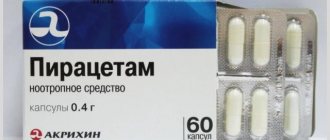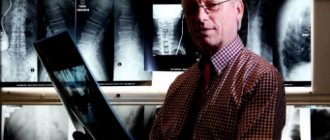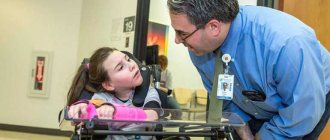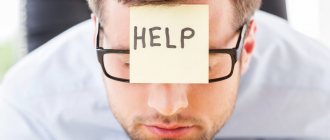Content:
- Transcranial therapy: what is the principle of the technique based on. 1.1. Transcranial neurostimulation: main advantages.
- Indications for transcranial electrical stimulation.
- Effects provided.
- Transcranial brain stimulation: contraindications.
- How does a TES therapy session work?
Transcranial brain stimulation has long been widely used in neurology for the treatment, rehabilitation and maintenance of quality of life in Parkinson's disease, mental disorders, after a stroke, and neuroinfections. Due to its high efficiency, safety and complex action, TES therapy is also successfully practiced in narcology to combat alcohol and drug addiction. At the same time, this physiotherapy procedure not only eliminates the craving for alcohol or psychoactive substances - the body is completely healed, cleansed and restored.
The use of electrical stimulation in children
Recently, cases of parents who complain about their child’s speech have become more frequent. Speech is the most complex mental process, a form of the highest nervous activity. The second signaling system in a person develops throughout his life and reflects his mental activity.
Different parts of the brain, cortical speech zones are involved in speech production: auditory, motor, visual. In the left hemisphere, in the temple area, the perception and differentiation of auditory stimuli occurs; in other words, the process of speech recognition occurs. And the inferior frontal gyrus, located in the left hemisphere, plays the role of speech utterance; in the visual area, graphic written speech is recognized.
Transcranial electrical stimulation of the brain allows you to influence the necessary areas and solve speech problems in a child. According to reviews from many parents who have already been able to try therapy on their baby, after the first course of therapy, which is 8-12 sessions, they noticed that the child’s speech improved significantly. Few people then take a second course, several sessions with a specialist - and everything gets better very quickly.
Transcranial electrical stimulation of the brain has also given very good results in the treatment of children with cerebral palsy. Thanks to this kind of procedure, children with this diagnosis:
- When electrodes are applied to the parietal and frontal areas, muscle tone is normalized and the volume of active and passive movements increases.
- Impact on the temporal and frontal cortex allows you to activate higher cognitive and speech functions.
- Impact on the temples and back of the head improves auditory and visual functions.
- By treating the temple and parietal region, you can significantly reduce the number of seizures.
But it is worth remembering that the procedure should be prescribed by the attending doctor, who has been observing a child with such a serious pathology for a long time. Only he can say in which case the procedure is allowed to be used, and when it can cause harm, because it has contraindications, which are described above, but each baby may have its own individual characteristics.
Transcranial therapy: what is the principle of the technique based on
During the procedure, brain structures are activated that regulate the production of endogenous opioid peptides - a group of neurotransmitters that determine a person’s emotional state, the functioning of the immune, cardiovascular, nervous and, in part, endocrine systems. The impact is carried out with strictly defined, dosed impulses, which eliminates complications and ensures a positive result of TES of the brain after the first procedure.
Transcranial neurostimulation: main advantages
- Safety. The treatment does not cause any side effects; specialists at the Ugodie clinic select its duration individually, taking into account the severity of the addiction and the psychological state of the patient (propensity to relapse, general attitude towards the treatment process, etc.).
- Efficiency. One course of TES therapy includes up to 10 physical procedures, and the result of transcranial exposure lasts up to 12 weeks. To consolidate the achieved effect, it can be repeated at intervals of 2–3 months.
Complex impact. Transcranial electrical stimulation has a positive effect on both the psycho-emotional and physical condition of the patient. This allows you to reduce the dosage or completely abandon medications used for the conservative treatment of alcohol or drug addiction. In this way, you can avoid unnecessary stress on the liver, digestive tract, and kidneys affected by toxins.
At the Ugodie drug treatment clinic, we provide the opportunity to conduct transcranial procedures both in the hospital and on an outpatient basis. We provide all our clients with maximum comfort, strict adherence to confidentiality, and reasonable prices. We offer TES therapy as one of the stages of complex treatment of alcoholism or drug addiction, along with detoxification, coding, work with a psychologist, and rehabilitation.
Mechanism of action
The main mechanism of action during interstitial electrical stimulation is segmental stimulation. The human peripheral nervous system is organized segmentally. Each small section of the spinal cord and the nerve roots that arise from it at this level send their impulses to the skin, muscles, blood vessels, soft tissues and periosteum.
The disease distorts these normal impulses emanating from a segment of the spinal cord and nerve roots to the blood vessels and muscles that they innervate. During interstitial electrical stimulation, the signal propagates segmentally. Blood microcirculation is restored in the affected tissues, nerve conduction improves, and pain goes away.
In its effectiveness, interstitial electrical stimulation often surpasses many well-known physiotherapeutic procedures, since it has a significant advantage - the signal delivered through the needle, bypassing the skin and subcutaneous fat, has a 200-300 times stronger and more focused effect. In this case, the procedure does not have a harmful effect on neighboring tissues and organs.
Indications for transcranial electrical stimulation
- Treatment for alcoholism.
- Fighting drug addiction. By the way, while addiction to alcohol can be to some extent dealt with using medication (Disulfiram, Esperal, Aquilong, etc.), drug addiction until recently was treated exclusively by psychotherapy with drug support with antidepressants and sedatives. Thanks to TES of the brain, results can be achieved much faster and relapses can be avoided in the future.
- Relief of withdrawal symptoms. In this case, transcranial current stimulation can be used in parallel with a course of drug detoxification therapy.
- “Maintaining” metabolism, the functioning of all internal organs and systems against the background of complete abstinence from drugs and alcohol.
- Stimulation of metabolic processes to cleanse tissues of residual products of the breakdown of ethyl alcohol and psychoactive substances.
Rhythmic transcranial magnetic stimulation
Rhythmic transcranial magnetic stimulation is a proven effective method for treating a number of diseases of the nervous system, successfully used in the Yusupov Hospital.
The technique is used in the treatment of the following pathologies:
- post-stroke pain syndrome;
- Parkinson's disease stage 3;
- trigeminal neuralgia;
- migraine;
- neuropathic pain;
- multiple sclerosis;
- spinal injury;
- tinnitus and others.
The clinical effect is observed after 10 therapy sessions, for depression - after 20. Experienced neurologists at the Yusupov Hospital, in combination with transcranial magnetic stimulation, depending on the individual characteristics of the patient’s body, can also prescribe medication and physical therapy.
Effects
Transcranial brain stimulation has a wide range of therapeutic effects. This:
restoration of a full psycho-emotional status: improvement of mood, normalization of sleep, fight against depression and depression (data have now been obtained on the positive effect of TES therapy for clinical depression);- relief of pathological craving for alcohol and drugs;
- improvement of microcirculation, blood flow in the vessels of the brain, supply of tissues with oxygen and nutrients;
- normalization of blood pressure;
- stimulation of the immune system;
- improvement of tissue regeneration;
- restoration of liver detoxification function, regulation of metabolism;
- inhibition of inflammatory processes.
Positive effects of TES therapy
- Easy social adaptation;
- Removing signs of withdrawal syndrome;
- A significant reduction in the pain that accompanies withdrawal symptoms;
- Normalization of psycho-emotional state;
- Normalizing blood pressure;
- Improved tissue repair;
- Elimination of skin itching, including neurological nature;
- Anti-allergenic effect;
- Reduction of inflammatory processes;
- Improving immunity;
- Elimination of symptoms of depression, easing the effects of stress.
TES therapy is a method that has passed all the necessary clinical trials of effectiveness and is approved for use in various fields of medicine, including narcology. The technique is based on the use of opioid and serotonin effects, which allow one to overcome the physiological and psychological symptoms of abnormal addictions and prevent the formation of many complications.
In patients in drug treatment centers, the activity of the immune system is acutely reduced, which is a consequence of the use of potent substances and the possibility of severe infectious diseases is increased. TES therapy has immunomodulatory effects and can be used for patients with suppressed immunity. After just a few procedures, an increase in the energy of phagocytes, which are involved in protecting the body from the action of pathogens of infectious diseases, is noticeable. It has been established in practice that this therapy increases the body’s resistance to diseases at the cellular level, which significantly reduces the possibility of allergies and purulent manifestations at the postoperative stage.
Transcranial brain stimulation: contraindications
Before starting a course of TES therapy, the narcologist at the Ugodie clinic carefully collects anamnesis and, if necessary, prescribes additional laboratory tests to exclude possible contraindications. These include:
oncological neoplasms;- epilepsy, complications of neuroinfections and other diseases accompanied by convulsive syndrome;
- severe form of hypertension;
- rehabilitation period after ischemic or hemorrhagic stroke;
- consequences of traumatic brain injury;
- violations of the secretory function of the thyroid gland.
A relative contraindication is damage to the skin in the area where the electrodes are attached. The physiotherapy procedure should be postponed until the wounds have completely healed.
Between the Chizhevsky chandelier and hyperbaric oxygenation
User Oyushminald from the Radiocat forum started testing after studying “optimistic articles” - here he gives an example of one of them (Oyushminald’s spelling and punctuation):
The patient is a 6-year-old boy with delayed speech development. There was no one to turn to; no one was taking care of the child. The parents wanted to take a risk. I performed the procedures with a current of 350 μA. The result exceeded expectations; after the seventh procedure, the child spoke in syllables rather than individual sounds. There was no limit to the joy. To celebrate, I published the first diagram. But the joy did not last long. After about two to three weeks the decline began. (…) Skills hard acquired over the previous year were lost. We started all over again.
In Russia, the romance of electrical brain stimulation for a long time remained the lot of buyers of “unique goods” from catalogs from mailboxes and desperate mothers of difficult children, and not at all fans of biohacking. tDCS is approved by the Ministry of Health, has been known since Soviet times as part of physiotherapy called “micropolarization” and has not caused any excitement for a long time. The main “evangelist” of micropolarization is the Soviet neurophysiologist Valery Lebedev: he was interested in the analgesic effect discovered with TES, and later the scientist significantly expanded the possible areas of application of the technology - from the treatment of gastritis and anxiety to the elimination of toxicosis. The description of the possibilities of using the method creates the feeling that Lebedev has invented a panacea. The devices are used to restore speech after strokes and treat children with autism, speech delays or attention disorders. However, large-scale studies of TES involving groups receiving placebo therapy have not been conducted in Russia, and the long-term effect has not been studied.
Why Study the Brain for Marketing and Communication: 12 Neuroscience Courses
In the wake of the popularity of electrical brain stimulation in the United States, several domestic companies decided to rebrand the old method of physiotherapy, providing it with bright youth marketing and increasing the price - a simple device is sold for 7,000 rubles, causing skeptics to grin. Combining two great Russian traditions—physiotherapy and DIY—enthusiasts like Oyushminald are sharing schematics for TES devices and building brain stimulators at home.
You have to act at your own peril and risk: “To master the method, I decided to call a doctor I know. But all the doctors I knew, as one, having studied the manuals, refused to participate in this, complains Oyushminald. “My assurances that all responsibility lay with me did not help. Even the doctor, whom I considered a friend, froze and stopped answering my calls. There was an idea that doctors don’t understand anything about this and are scared. They just weren't taught this! (...) I had to master it myself.”
© SebbyMeister/T&P
How does a TES therapy session work?
Treatment is carried out in a comfortable office. The patient is asked to either lie down on a couch or sit in a chair, then special electrodes connected to a transcranial electrical stimulation machine are attached to his head. The duration of the first session is about 20–25 minutes, subsequently the procedure can take up to 40–45 minutes. In this case, the doctor is next to the patient, closely monitors his condition and adjusts the intensity of the effect.
The frequency of sessions is determined on an individual basis. In severe cases (for example, with severe withdrawal), TES therapy can be carried out twice a day (but with an interval of at least 10 hours), subsequently switching to a daily regimen or inviting the patient for treatment once every two days.
Exposure is not accompanied by any unpleasant symptoms. On the contrary, soon after the start of TES therapy, you feel an emotional uplift, a surge of vitality and energy, and your well-being improves.
Narcologists at the Ugodie clinic offer the latest and safest methods for overcoming drug and alcohol addiction. Contact us! Take the first step towards a sober life!
Need some advice?
OR CALL A DOCTOR
CALL!
+7
How is TES performed and on what device?
Just a few years ago, the procedure could only be carried out within the walls of a medical institution under the supervision of a doctor, but now, thanks to modern developments, a new device has appeared - the alfariya transcranial electrical stimulation device.
The principle of operation of this device is based on stimulating the alpha rhythms of the brain, restoring the normal functioning of other biorhythms, increasing the concentration of serotonin, acetylcholine, met-enkephalin and beta-endorphins.
The device is based on precision technology, thanks to which it is possible to generate a complex sequence of current pulses.
The transcranial electrical stimulation device is an excellent alternative to medications, especially in cases where long-term treatment is required. During the procedure, the patient feels pleasant relaxation, lightness throughout the body and clarity of thinking. The device is easy to use, therefore it is recommended for both medical institutions and home use.
It is used for various pathologies, including gynecology.










